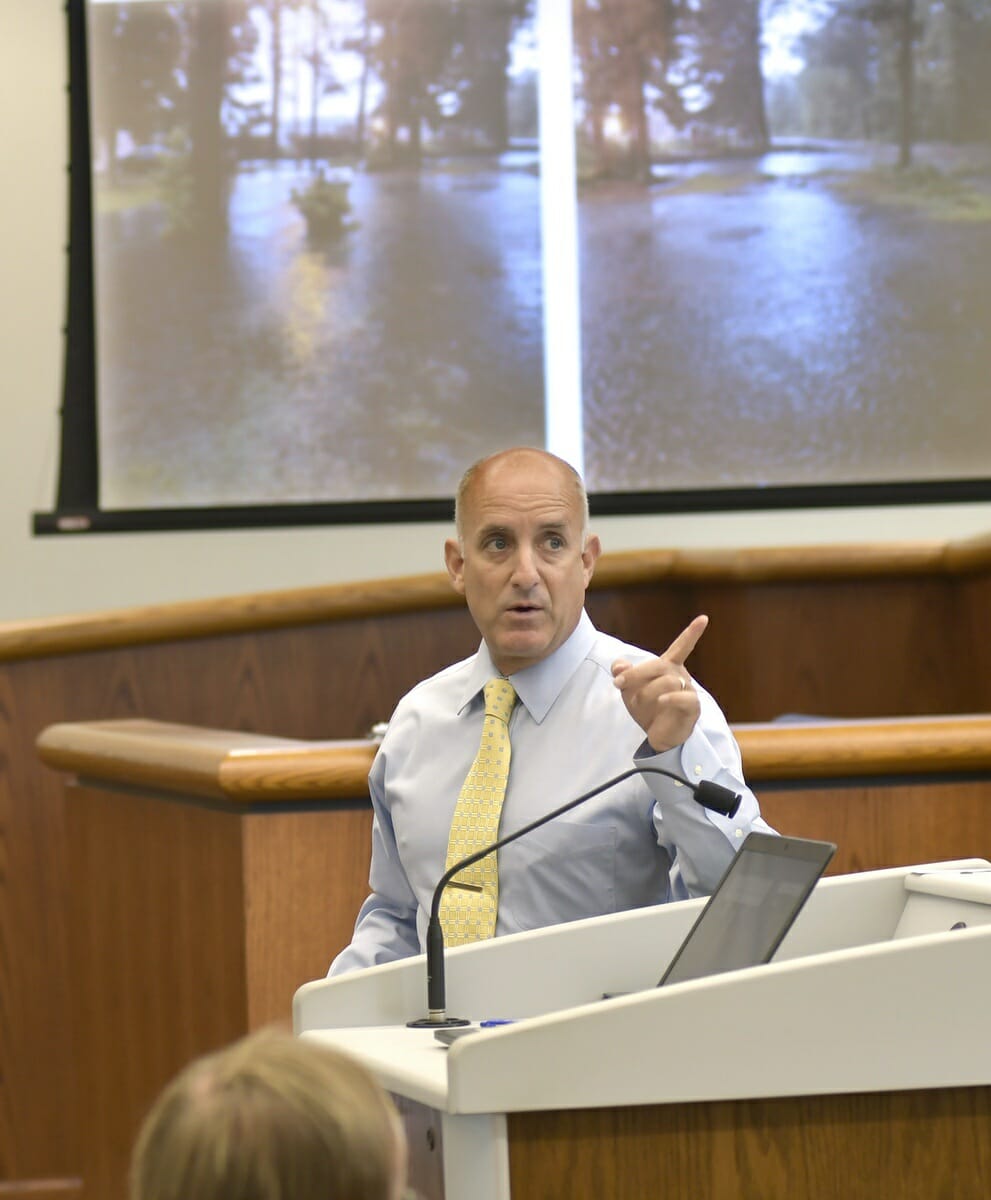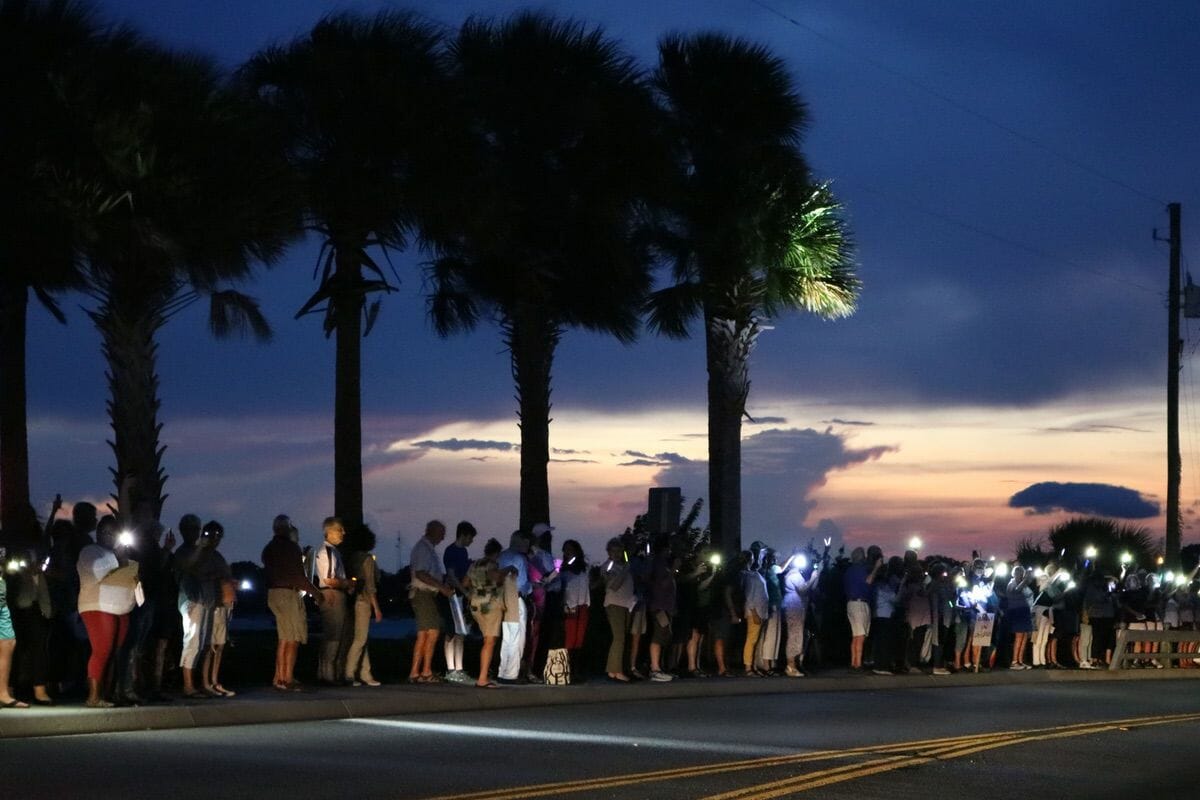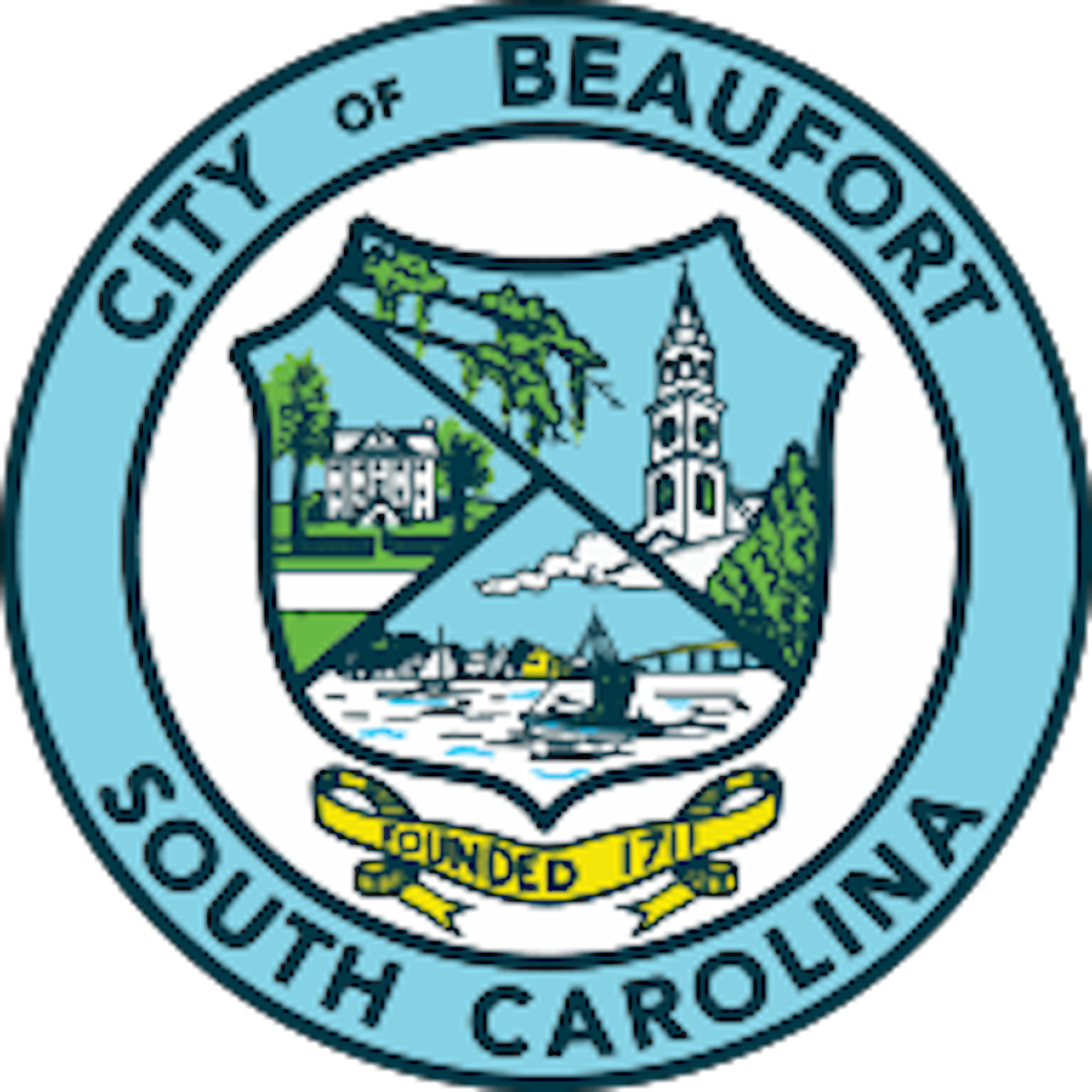By MINDY LUCAS
Judy Teas remembers Oct. 8, 2016 well. Not only was it the day Hurricane Matthew blew through Beaufort, it was the day water came gushing into her Mossy Oaks home.
“I had 8 inches in my house, and my neighbor had 18 inches,” she said, shaking her head.
After Matthew, Teas moved out of her childhood home of more than 50 years while repairs were made. She stayed out for nearly a year.
It’s a hardship many of Teas’ neighbors in the community east of Battery Creek have become all too familiar with as hurricanes, rising sea levels and major rain events like the one that hit the area on July 5 have made problems with low lying areas around Beaufort, already prone to flooding, even worse.
On Wednesday, July 10, Teas joined about 50 other mostly Mossy Oaks residents at Beaufort’s town hall for an update on the city’s flood plan.
Headed by Neal Pugliese, members of the Mossy Oaks Drainage Task Force took residents through a slide presentation outlining the “9+ Challenged Areas” that need to be addressed. Mossy Oaks topped the list.
“We’ve got the money to go ahead and get this done, we just have to go through the administrative steps now,” said Pugliese.
While the projected cost for the city’s flooding projects is estimated at $13 million, Mossy Oaks projects alone have been estimated at $6 million. So far, the city has received a total of $7.5 million for all of the projects from a $6 million bond and two community block grants totaling $1.5 million.
Administrative steps include permitting and go-aheads the task force is waiting on from various agencies including South Carolina’s Department of Transportation and Department of Health and Environmental Control.
In addition, a group of researchers from the University of South Carolina, College of Charleston, South Carolina Sea Grant Consortium and Carolinas Integrated Sciences and Assessment is conducting an assessment of the city’s flooding issues. The same group is conducting a similar assessment for the county.
Findings from those assessments are expected back in August and will help guide or tweak decisions on project work, Pugliese said.
In the meantime, the city has started cleanup work designed to alleviated clogged ditches. A recent cleanup of the Jane Way canal resulted in two, 30-foot dumpsters full of trash, yard debris, construction waste and old tires.
Project officials also outlined plans for the work which were divided into two areas of focus.
Basin I includes the “duck pond” off Battery Creek Road, the Jane Way Ditch, West Royal Oaks Ditch, Spanish Moss Trail, Upstream Culverts and Battery Creek Road.
Basin II includes projects in the Broad Street Ditch, Gentry Woods Outfall, Southside Park Pond and additional projects along the Spanish Moss Trail and Battery Creek Road.
From dredging the duck pond to raising Battery Creek Road and tying it back into driveways, the projects outlined involve an extensive punch list that will take place across 500 acres of affected watershed and multiple jurisdictions including the Army Corps of Engineers, Pugliese said.
Some projects such as addressing the Southside Park pond will require both proactive and reactive measures, project officials said at the meeting, so not only will the pond be dredged but the city will also use traveling pumps to respond to standing water caused by high tides or major rain events.
Residents at the meeting had a variety of concerns over illegal dumping in ditches that exacerbates drainage issues to concerns of how the work might impact wildlife in the area.
Project officials said the city will be cracking down on code enforcement to dissuade illegal dumping and will work closely with DHEC to minimize any impact on the environment.
Pugliese said they’ve identified four scenarios that impact flooding in the community. Those are a low-tide/low-rain event; a low-tide/high-rain event; a high-tide/high-rain event and a major hurricane.
“We’re going to be able to resolve three of the four scenarios,” he said referring to the first three.
Hurricanes can come not only with heavy rain or high tides, but can also include storm surge, and that would be a “significant event” which would require a city-wide response, Pugliese said.
Still, he believes the measures will eventually lead to a solution to the decades-old problem of flooding in the area.
“We believe these measures are going to take care of most of these events,” he said.
Above: Neal Pugliese, chairman of Beaufort’s Mossy Oaks Drainage Task Force explains how certain points in the Mossy Oaks area became heavily flooded on July 5 after 3.5 inches of rain fell in two hours during high tide on a full moon and what steps the City is going to take give the flood-plagued area some relief. Pugliese called it “the perfect storm for bad things to occur.” Photo by Bob Sofaly









